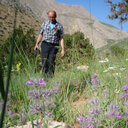Belamcandae chinensis rhizome--a review of phytochemistry and bioactivity.
Sleutelwoorden
Abstract
Belamcandae chinensis rhizoma, is a rhizome of Iris domestica (syn. Belamcanda chinensis). Under the Chinese name she gan, it is extensively used in Traditional Chinese Medicine and other East Asian phytotherapy systems. Recently, the monograph of Belamcandae chinensis rhizoma has been included in the European Pharmacopeia. This review provides a comprehensive summary and systematizes the literature data on ethnobotanical uses, chemical constituents and biological effects of Belamcandae chinensis rhizoma and its components. The main group of phytochemicals identified in the dried rhizoma are polyphenols such as isoflavones, xanthone glycosides, stilbenes, simple phenols and quinones. Another characteristic class of substances are triterpenopid iridals. The most typical traditional usage of Belamcandae chinensis rhizoma is for healing respiratory diseases but most of pharmacological research so far has been focused on isoflavones and their estrogenic properties. In pharmacological research, it has been mainly considered as a source of tectorigenin--a phytoestrogene with therapeutic potential in hormone-dependent cancer. The most active isoflavones are tectoridin, tectorigenin and irigenin. The available literature indicates that Belamcandae chinensis rhizoma can prevent excessive oxidation of biomolecules based on various antioxidant mechanisms: transition metal ions reduction, inhibition of lipid peroxidation, free radicals scavenging. The other biological activities proven by a number of in vitro studies include: antimutagenic,anti-inflammatory, anti-angiogenic, hypoglycemic. In conclusion, the knowledge about Belamcandae chinensis rhizoma has been growing rapidly in the recent years,but there are still significant gaps in our understanding of its bioactivity, therapeutic value, and roles played by each of the numerous phytochemicals.


